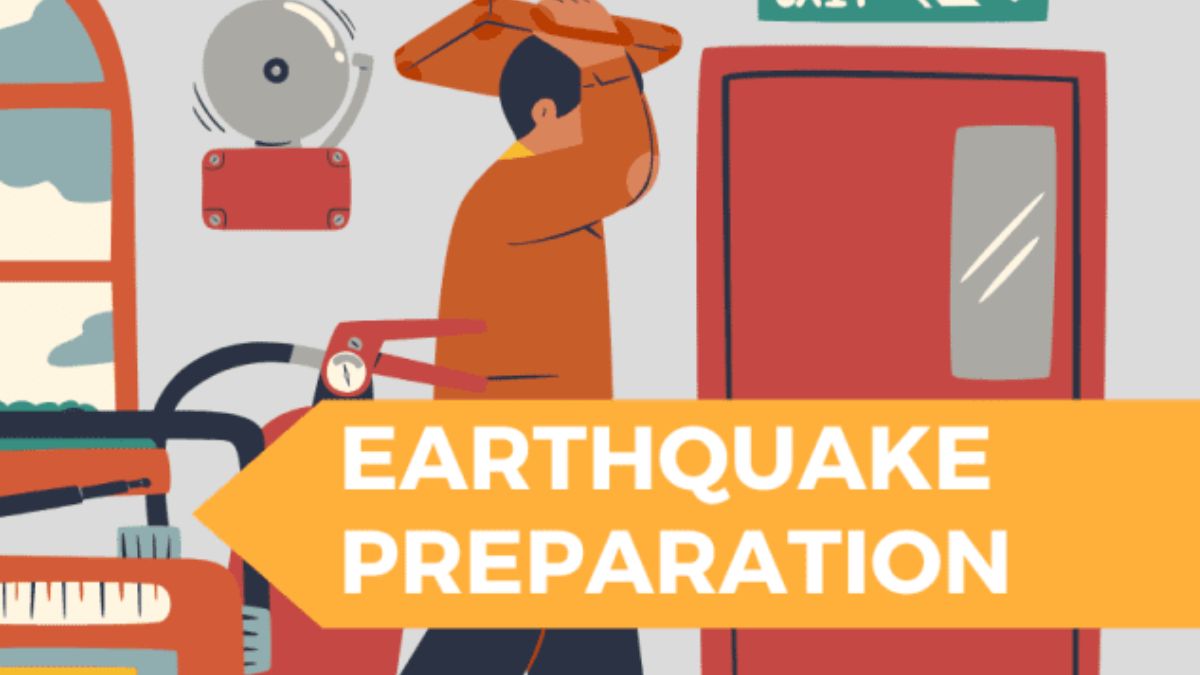 Image Credits - Coto Academy
Image Credits - Coto Academy
Advertisement
Earthquakes can happen in an instant, leaving little time to react. But knowing what to do before, during, and after one can make all the difference. Whether you’re at home, work, or outside, here’s a simple step-by-step guide to help you stay safe when the ground starts shaking.
Step 1: Get Ready before an Earthquake strikes
Preparation is key. Taking some time now to get ready can keep you safe later.
Build an Emergency Kit: Have the basics ready—water, non-perishable food, a first aid kit, flashlights, batteries, and copies of important documents.
Make Your Home Safer: Secure heavy furniture to walls, strap down water heaters, and use safety latches on cupboards to keep things from falling. Keep heavy items on lower shelves.
Know Your Risks: Find out if your area is earthquake-prone and understand your local building codes. It’s also a good idea to have a plan for where you’d go and how you’d communicate with family if something happens.
Have a Family Plan: Make sure everyone knows what to do during an earthquake. Pick a safe place to meet if you’re separated, and make sure emergency contact numbers are easily accessible.
Step 2: What to do during an Earthquake
When the shaking starts, the best thing you can do is “Drop, Cover, and Hold On.”
Drop: Get down on your hands and knees. This will keep you from being knocked over.
Cover: Find something sturdy to get under, like a table or desk, to protect your head and neck. If there’s no cover, crouch next to an interior wall and use your arms to shield your head.
Hold On: Hold on to whatever you’re using for shelter until the shaking stops. If you’re under a table or desk, hold onto the legs to keep it steady.
If you’re outside, move away from buildings, trees, streetlights, and anything that could fall. If you’re in a car, pull over safely and stay inside.
Step 3: Stay safe after the shaking stops
Once the earthquake ends, don’t let your guard down—there could be aftershocks. Here’s what to do next:
Check for Injuries and Hazards: Look after yourself and others, and treat any injuries if you can. Be careful of broken glass, downed power lines, and gas leaks.
Avoid Using Elevators: If you’re in a building, take the stairs to leave safely, as elevators may be damaged.
Prepare for Aftershocks: These smaller quakes can follow the main event and cause more damage, so stay alert and be ready to drop, cover, and hold on again.
Stay Informed: Tune into emergency broadcasts to get important updates and instructions. Stay away from damaged areas unless authorities say it’s safe.
Step 4: Know what to do in different places
Your safety plan depends on where you are when the earthquake hits:
Indoors: Stay put and follow the “Drop, Cover, and Hold On” rule. Don’t run outside during the shaking—it’s often safer inside.
Outdoors: Move away from buildings, trees, and anything that could fall. Once you’re in an open area, stay there until the shaking stops.
In a Car: Pull over to a safe spot away from bridges, overpasses, and buildings. Stay in your car until the earthquake is over.
By the Water: If you’re near the coast, move quickly to higher ground after the shaking stops in case of a tsunami.
Step 5: Practice makes perfect
Earthquake drills might seem unnecessary, but they can be lifesaving. Practice with your family, friends, or coworkers so everyone knows what to do. The more familiar you are with the steps, the easier it will be to stay calm and react quickly when the time comes.
You can’t predict when an earthquake will happen, but you can prepare. By securing your home, having a plan, and knowing what to do during and after the shaking, you’re already taking huge steps toward staying safe. Remember, staying calm and acting fast is your best bet for getting through an earthquake safely.
